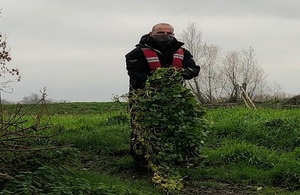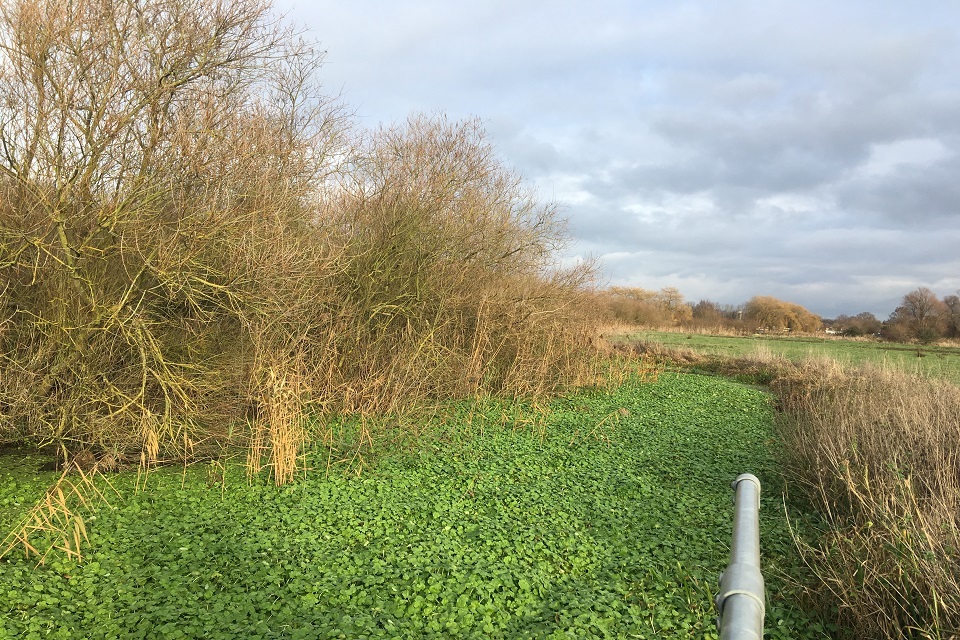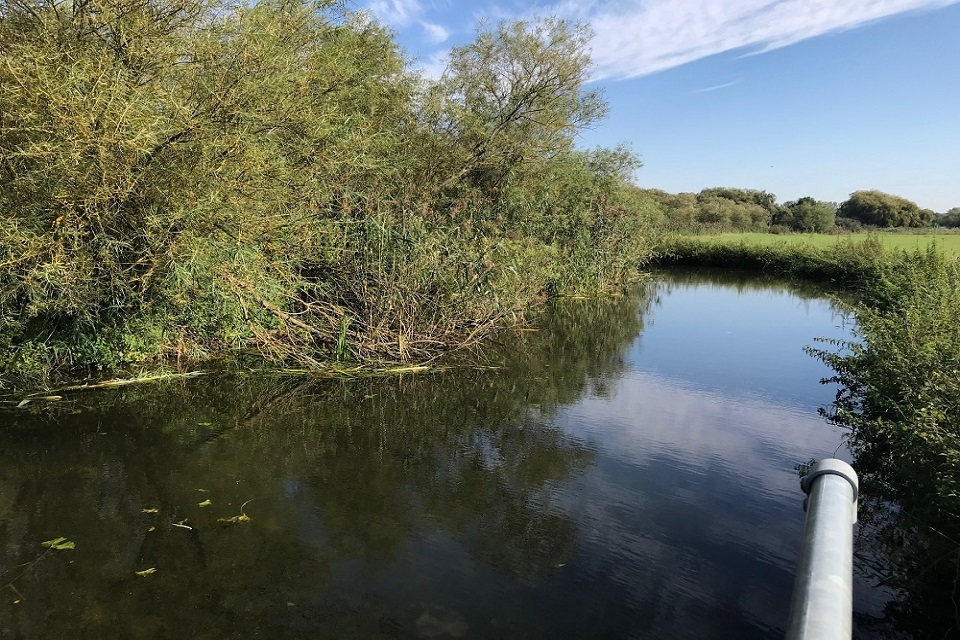37km of the River Great Ouse free of invasive Floating Pennywort
A 5 year partnership project to eliminate pennywort on a 23 mile stretch of the River Great Ouse has been a success.

An officer from the Environment Agency holding a thick mat of Floating pennywort from the river Great Ouse.
The Environment Agency, Anglian Water and various volunteer groups have worked together to free the Bedford Ouse from floating pennywort.
The invasive non-native aquatic plant had formed thick mats on the Bedford Ouse and was growing at a rate of 20 centimetres a day. This meant back channels were lost, navigation for boaters and canoers was difficult and repercussions for wildlife and plants was likely.
The partnership project, which began in 2017, has successfully removed this dense plant along the Bedford Ouse from Bedford to Brampton. To remove the plant various methods were used including de-bulking using weed boats, continuous handpicking, and revisiting the sites every 2 weeks to check it had not grown back. These methods then had to be repeated over several years.

The Bedford ouse before the Floating pennywort was cleared.
James Brokenshire-Dyke, a project engineer at the Environment Agency, said:
We are really happy with the results we are seeing along the Bedford Ouse. By removing the floating pennywort along this section of the river, we become 1 step closer to completely eradicating it. We have now moved on to the next part of the project which sees us continuing this work from Brampton to Earith.
Chris Gerrard, Natural Catchment and Biodiversity Manager at Anglian Water, said:
Floating pennywort can have big impacts on wildlife and recreational users. As part of our £800 million environmental improvement programme to protect and enhance the region’s environments, we have partnered with the Environment Agency and others to help keep the Ouse free of this problem plant and prevent it from reaching our reservoir at Grafham Water.

The Bedford ouse after the Floating pennywort was cleared.
Floating Pennywort is difficult to control and eradicate as it has the ability to re-grow from a small fragment. This is why constant monitoring of the sections of river where we have removed the floating pennywort is necessary. The plant was brought into the UK in the aquatic nursery trade in 1990, it was banned from sale and made illegal in 2014.
Members of the public can help stop the spread of this invasive species by contributing to the Pennywort Alert project led by RiverCare (a Keep Britain Tidy programme supported by Anglian Water). If it’s safe to do so take a photograph and record any sightings on the iRecord App or iRecord website. Find out more at http://www.rivercare.org.uk/pennywort-alert/2918
Boaters can also help by following the Check, Clean and Dry procedures.
Check: Check your equipment and clothes for live organisms or plant fragments - in particular areas that are damp or hard to inspect.
Clean: Clean and wash all your equipment, footwear and clothes thoroughly. Use hot water if possible. If you find one of these organisms leave them at the water body where you found them.
Dry: Dry all equipment and clothing - some species can live for many days in moist conditions. Make sure you don’t transfer them somewhere else.